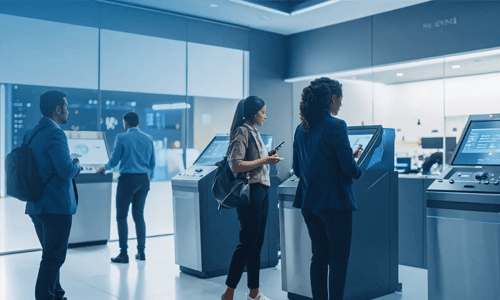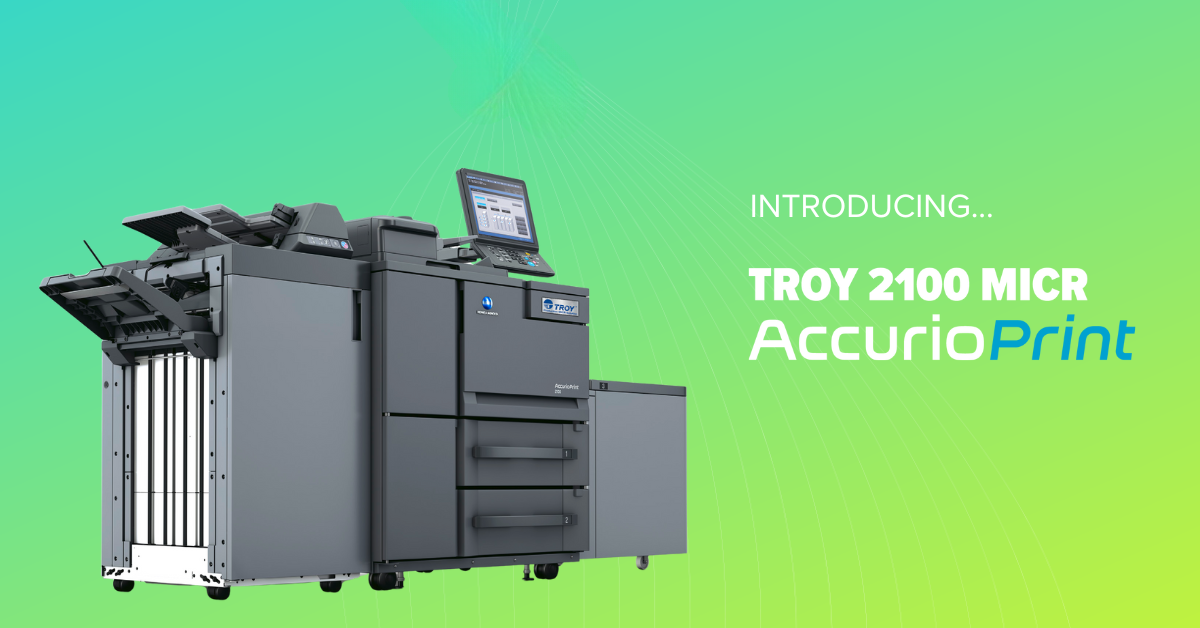5 Questions to Ask Before Growing Your Branch with Self-Service

If you're a banking executive or president of a small bank or credit union, you're likely researching ways to your organization can expand without breaking the bank on unnecessary investments, and there are plenty out there.
What is an unnecessary investment for banks?
More ATMs: While ATMs are still widely used by banking customers, investing in more ATMs in your fleet is not something you want to do. ATMs are primarily used to withdraw or deposit cash but truth be told, cash is on it's way out. With customers and businesses being more accustomed to digital transactions, cash usage in U.S. transactions has dropped from 32% in 2017 to 16% in 2023, with projections showing a further decline to 11% by 2027.
More tellers: Teller roles are another staple of traditional banking that we are seeing slowly fade, also due to digital banking. Employees in teller roles are transitioning to that of a "universal banker," essentially someone who takes on more customer facing responsibilities rather than just simple transactions at the window. Teller projected to fall by 15% by 2032 – that’s about 53,000 positions.
More branches: Less foot traffic to branches because of online banking certainly isn't going to be solved by setting up even more branches. In fact, banks are consistently shutting down their branches with each passing month. This might be good for banks, but bad for their customers in rural areas who rely on in-person transactions, advice, and visits.
So, what's the path forward?
Banks are embracing self-service technology to meet the growing demand for faster, more flexible, and more convenient customer experiences. As digital habits reshape how people interact with financial institutions and how banks offer their services, self-service machines offer a way to modernize branches without sacrificing service quality. They also help banks optimize staffing, reduce operational costs, and extend services to locations that may not justify a full-service branch.
In-branch self-service machines that can handle transactions like account openings, bank card printing, cashier's check printing, and more are going to be the most necessary investment for banks & credit unions moving forward. If you're a banking executive, you already know that.
But before expanding your branch network with self-service technology, it’s critical to ask the right questions. These five questions will help ensure your investment aligns with your goals and delivers real value.

1. Whats Your Deployment Plan?
A clear deployment strategy is essential. Will you start with a pilot program in select branches or roll out across your entire network? Will machines be placed inside branches, in vestibules, or in off-site locations?
Consider:
- Customer traffic and usage patterns
- Branch layout and accessibility
- Staff training and support
- Remote monitoring and maintenance capabilities
A phased rollout allows you to test, learn, and refine before scaling.
2. Do You Plan on Putting Self-Service into All Your Branches?
Not every branch may require the same level of self-service functionality. Some locations may benefit from full-service kiosks, while others may only need basic capabilities.
Evaluate:
- Demographics and customer behavior
- Transaction volumes
- Staffing levels and operational goals
This helps you tailor your deployment to maximize impact and efficiency.
3. Is Your Banking Core Ready?
Self-service machines must integrate seamlessly with your core banking system to deliver real-time services. If your core isn’t ready, you may face limitations in functionality or customer experience.
Assess:
- API readiness and integration capabilities
- Real-time data synchronization
- Security and compliance alignment
Work closely with your IT and vendor teams to ensure a smooth technical foundation. Learn more about how TROY self-service machines integrate with banking cores.

4. Whats Your Implementation Timeline?
Timelines can vary depending on the complexity of your deployment. From procurement and installation to testing and staff onboarding, each phase requires careful planning.
Include time for:
- Vendor selection and customization
- Infrastructure upgrades
- Compliance reviews
- Customer education and marketing
A realistic timeline helps avoid rushed decisions and ensures a successful launch.
5. What’s Your Budget?
Self-service machines are a strategic investment. Your budget should account for both upfront costs and long-term operational expenses.
Budget for:
- Hardware and software
- Installation and infrastructure
- Maintenance and support
- Staff training and customer onboarding
Also consider the potential return on investment through improved efficiency, reduced staffing costs, and enhanced customer satisfaction.
Ask First, Grow Smart
Self-service banking is more than a technology upgrade, it’s a strategic shift in how branches operate and serve customers. By asking these five questions, banking executives can build a roadmap that aligns with their goals, infrastructure, and customer needs.
Ready to explore your self-service strategy? Let’s talk about how to tailor these solutions to your branch network.
Related Posts

USPS To Temporarily Increase Prices This Fall
The U.S. Postal Service has announced a temporary price increase on select package services, effective October 5, 2025 through January 18, 2026.

5 Questions to Ask Before Growing Your Branch with Self-Service
If you're a banking executive or president of a small bank or credit union, you're likely researching ways to your organization can expand without breaking the bank on unnecessary..

Leave a Reply